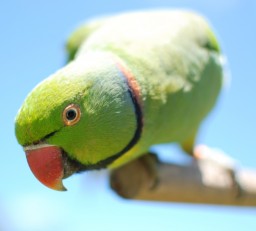Fur and feathers in the pipeline …..
18/03/2014

Indonesia
Six months on from the formation of the Sumatran Tiger Health Forum (STHF) WVI’s big cat expert, John Lewis, is heading out to Indonesia next week. STHF requested that WVI act as their technical advisor for as long as necessary, a role that WVI is delighted to fulfil.
Sadly John wont be visiting the field on this occasion, but shall be reviewing progress and sorting out some of the innumerable technical, logistical and legal difficulties that need to be overcome in the development of such a groundbreaking programme. Emails can only get you so far!
The STHF’s aim is to develop a country wide surveillance programme. It is the first comprehensive programme of its type and one of the most exciting veterinary developments in tiger conservation in recent years. If successful, this initiative could develop into a model that could be exported to other tiger range states, and ultimately establish a global disease surveillance programme across all tiger habitats.
Mauritius
In April, avian expert, Andrew Greenwood, will be heading to the islands of Mauritius to follow up on a project that he has been veterinary advisor to for many years.
The Mauritian Wildlife Foundation, under Prof Carl Jones’, has brought back a number of bird species from the brink of extinction. The echo parakeet, for example, was reduced to around 20 individuals and through intensive breeding programmes the population has risen to around 500. Sadly this success story was nearly thwarted by Psitticine Beak and Feather Disease which started to emerge in 1995, brought over by the invasive ring neck parakeet.
Under Andrew’s guidance, MWF staff changed their practices to reduce the risk of disease transmission between echo parakeets, then to bring the level of PBSD down to a manageable level, where it was not hindering the population growing. During this time Andrew has co-supervised two PhD students studying the emerging disease and subsequent recovery, and hopefully a third is in the pipeline. It is very useful to have detailed study of the epidemiology of these kinds of disease outbreaks.

MWF has also been re-establishing entire island habitats, such as Round Island pictured above; starting first with the flora before moving on to the fauna. Before moving birds and reptiles to a new habitats it is imperative that health screening is carried out on individuals that are moving as those left behind and similar species in the new habitat. Birds and reptiles are caught, samples taken, labelled and sent back to the UK for analysis. Between visits to Mauritius, Andrew advises MWF scientists on the results from these samples, often having meetings with them in the UK.
In Mauritius, Andrew will be training new MWF scientists and ensuring that protocols are still applicable. He will be up to speed on their latest projects so best able to advise from afar.
Sumatran Tiger Health Forum
STHF was born out of discussions WVI big cat expert John Lewis had whilst in Indonesia in March 2013. John was there to help trap and radiocollar a Sumatran tiger in mixed use landscape. During his discussions with Indonesian vets and Forest Officials (BKSDA), see picture below, John heard stories of tigers behaving very oddly indeed.

In September 2013, John returned to Indonesia to help with a workshop that set up the Sumatran Tiger Health Forum. WVI’s funders enabled many Indonesian vets based in Sumatra to attend the workshop. It is important these vets were involved as it is they who have to deal with conflict tigers in particular.
STHF is completely an Indonesian initiative and Dr Retno of Taman Safari Int. is the current elected coordinator.
WVI’s role is to provide technical advice where needed. For more, read the news.
Mauritian Wildlife Foundation
You can help by donating:

.png)
.png)

.png)
.png)







.png)






.png)
.png)




.png)


